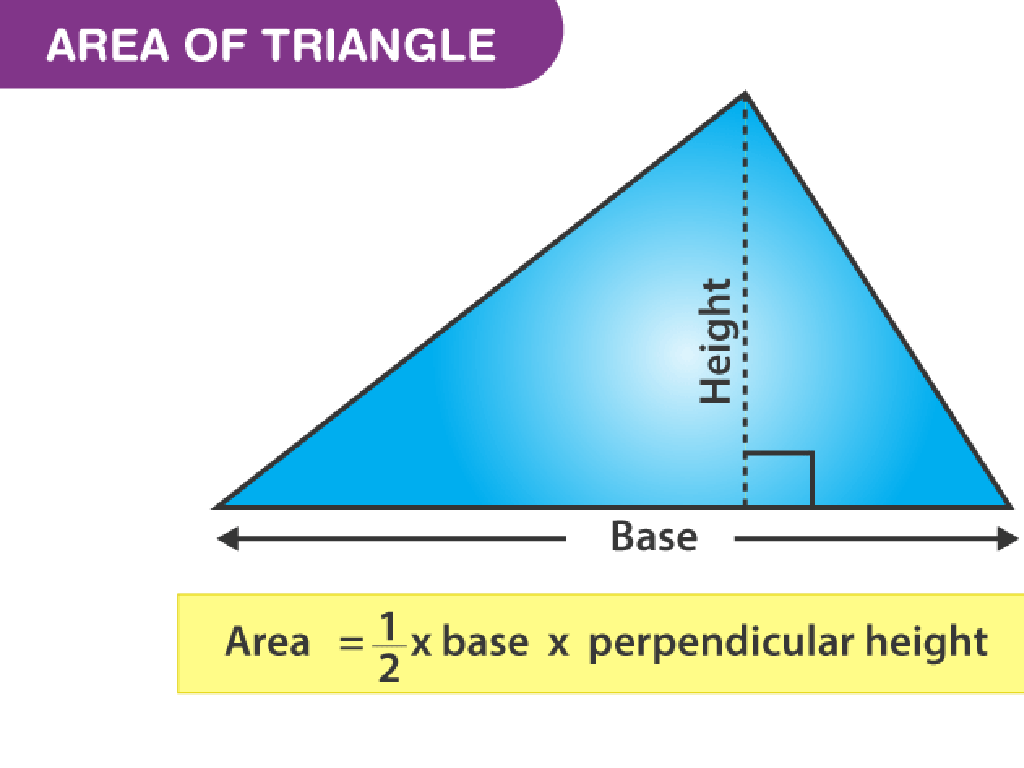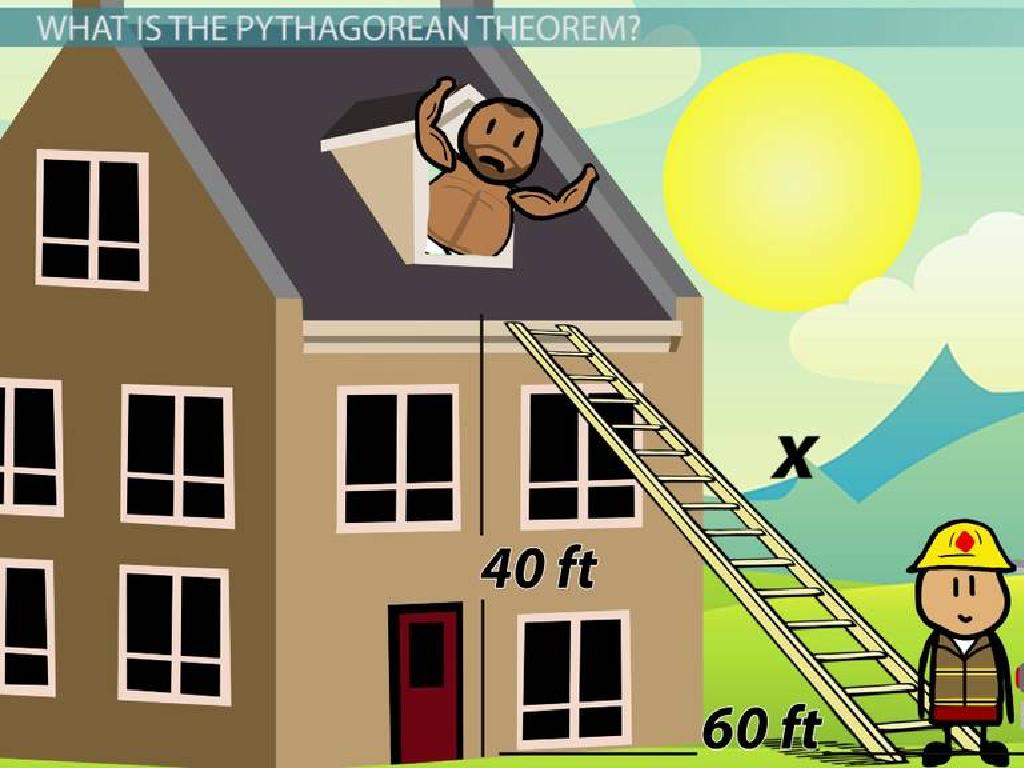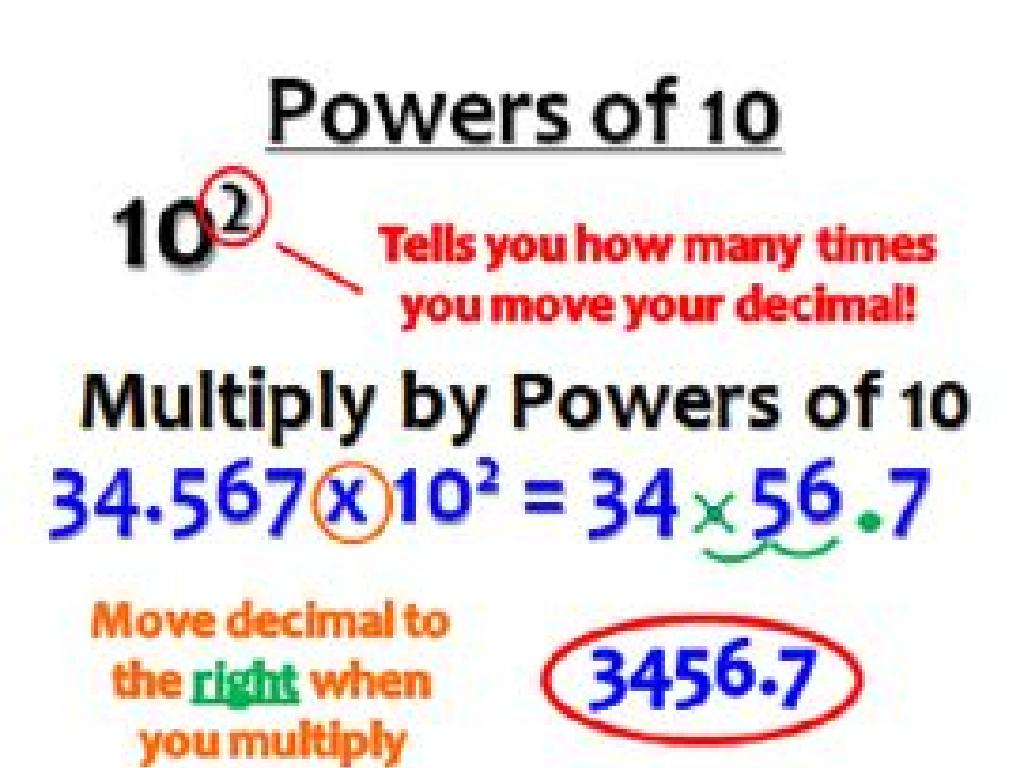A.M. Or P.M.
Subject: Math
Grade: Third grade
Topic: Read And Write Times
Please LOG IN to download the presentation. Access is available to registered users only.
View More Content
Understanding A.M. and P.M.
– A.M. and P.M. explained
– A.M. is from midnight to noon, P.M. is from noon to midnight.
– Importance of A.M. and P.M.
– Knowing A.M. and P.M. helps us schedule our day correctly.
– Reading a clock
– Review the position of the short and long hand.
– Practice telling time
– Use examples like 3:00 P.M. or 8:00 A.M. to practice.
|
This slide introduces the concept of A.M. and P.M. to help students differentiate between times of the day. A.M. stands for ‘ante meridiem’ which is Latin for ‘before midday,’ and P.M. stands for ‘post meridiem’ or ‘after midday.’ Understanding this distinction is crucial for daily activities such as going to school, eating meals, and bedtime routines. A quick review of reading a clock is also included to ensure students can apply A.M. and P.M. when telling time. Encourage students to practice by looking at different clocks and stating the time with A.M. or P.M. Provide various scenarios, such as their school start time or typical lunchtime, to make the practice more relatable.
Understanding A.M. in Time
– A.M. stands for ‘Ante Meridiem’
– Means ‘before midday’ or ‘noon’
– Midnight to noon is A.M. time
– 1 A.M., 2 A.M., … up to 11 A.M. are all A.M. times
– Examples: 8 A.M. is breakfast time!
– Like when you start school at 9 A.M.
|
This slide introduces the concept of A.M. to the students, explaining that it stands for ‘Ante Meridiem’ which is Latin for ‘before midday’ or ‘before noon’. Emphasize that any time we talk about from midnight (12:00 A.M.) until just before noon (11:59 A.M.) is considered A.M. Use relatable examples to help them connect the concept to their daily lives, such as the time they have breakfast or the time school starts in the morning. Encourage students to look at clocks and think about what activities they do in the A.M. to reinforce the concept.
Understanding P.M. in Time
– P.M. stands for ‘Post Meridiem’
– Means ‘after midday’ or ‘after noon’
– Noon to midnight is P.M. time
– Examples: 3 P.M., 8 P.M., 11 P.M.
– After lunch, school ends at 3 P.M., dinner might be at 8 P.M.
|
This slide is aimed at helping third-grade students understand the concept of P.M. as it relates to telling time. P.M. is an abbreviation for the Latin term ‘Post Meridiem,’ which translates to ‘after midday’ or ‘after noon.’ This indicates that any time after 12:00 noon until 11:59 at night is considered P.M. It’s important to provide examples that are relatable to the students’ daily routine, such as typical school dismissal times, evening activities, or bedtime, to help solidify their understanding of P.M. hours. Encourage students to think of activities they do in the P.M. and share them with the class.
Understanding A.M. and P.M. Times
– 8:00 A.M. means morning time
– A.M. is used for the time before noon, like when we start school.
– 12:00 P.M. is lunchtime at noon
– P.M. starts at noon, which is when we have lunch.
– 3:00 P.M. for after-school fun
– After school activities are usually in the P.M.
– A.M. and P.M. help us plan our day
|
This slide aims to help students differentiate between A.M. and P.M. times through relatable daily activities. A.M. stands for ‘ante meridiem’ which is Latin for ‘before midday,’ and P.M. stands for ‘post meridiem’ or ‘after midday.’ Use examples that are part of the students’ routine to make the concept more understandable. For instance, 8:00 A.M. is when school starts, which is in the morning, hence A.M. At 12:00 P.M., it’s noon, and time for lunch, marking the beginning of P.M. After school activities, like sports or clubs, happen after the school day, around 3:00 P.M. Encourage students to think of other activities they do in the A.M. and P.M. to reinforce the concept.
Activity: Identifying A.M. and P.M.
– Examine clocks on the worksheet
– Determine if times are A.M. or P.M.
– Consider what you do at that time of day
– Circle A.M. or P.M. for each clock
– A.M. is morning, P.M. is after noon
|
This activity is designed to help students distinguish between A.M. and P.M. times, which is a fundamental skill in reading and understanding clocks. Provide each student with a worksheet that has a variety of clocks showing different times. Students should use their knowledge of daily routines to decide whether the time on each clock is A.M. or P.M. and circle the correct abbreviation. For example, if a clock shows 7:00 and a student usually has breakfast at that time, it’s likely A.M. If another clock shows 8:00 and a student usually has dinner, it’s likely P.M. Encourage students to share their reasoning during the next class. This will help them to understand the 12-hour clock system and relate it to their everyday experiences.
Class Activity: My Daily Schedule
– Create your own schedule
– Label activities with A.M. or P.M.
– Morning activities are A.M., after noon are P.M.
– Write down your daily activities
– Share with a classmate
– Discuss what you do at different times of the day
|
This activity is designed to help students understand the concept of A.M. and P.M. and how it relates to daily activities. Students will create a schedule of their typical day, writing down activities they do from morning to evening and labeling each with A.M. or P.M. This will help them visualize the 24-hour cycle and the division between morning and afternoon/evening. Encourage creativity and ensure they understand that A.M. is from midnight to noon, and P.M. is from noon to midnight. After creating their schedules, students will pair up and share their schedules with each other, fostering communication skills and peer learning. Possible activities could include waking up, eating breakfast, going to school, having lunch, playing after school, eating dinner, and bedtime routines.
Understanding A.M. and P.M.
– Review A.M. vs. P.M.
– A.M. is before noon, P.M. is after noon
– Importance of knowing A.M./P.M.
– Helps us schedule our day correctly
– Quick quiz question
– Is 7:00 at night A.M. or P.M.?
– Class discussion
|
This slide aims to consolidate the students’ understanding of the concepts of A.M. and P.M. Start by reviewing that A.M. stands for the time before noon and P.M. stands for the time after noon. Emphasize the importance of distinguishing between A.M. and P.M. in daily life, such as knowing when to go to school, when to have lunch, and when to sleep. Engage the class with a quick quiz asking if 7:00 at night is A.M. or P.M. to check their understanding. Encourage students to explain their reasoning and discuss any confusion. This interactive conclusion will help reinforce their learning and ensure they can apply the concept of A.M. and P.M. to their daily routines.






